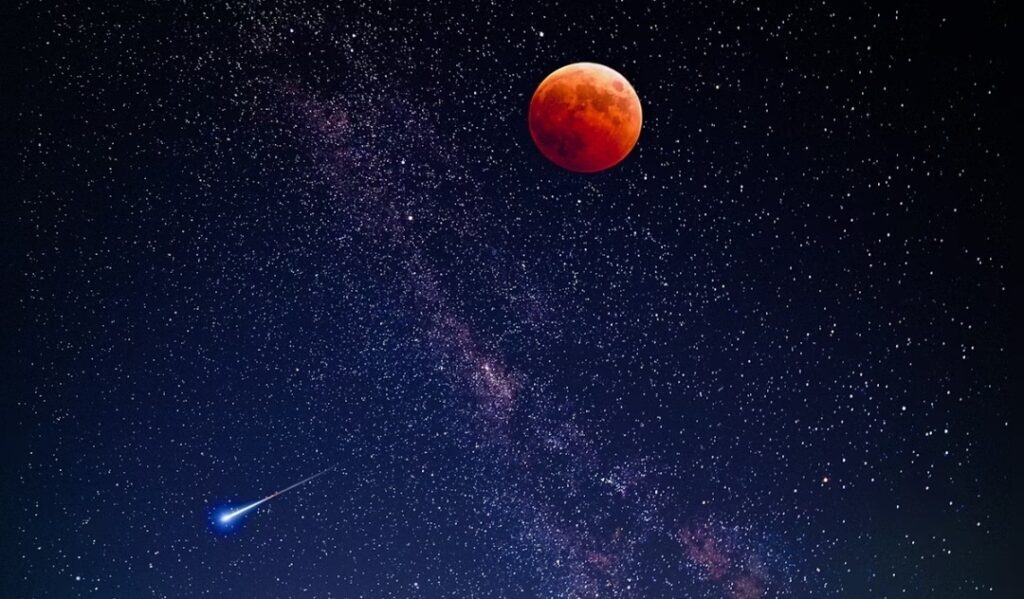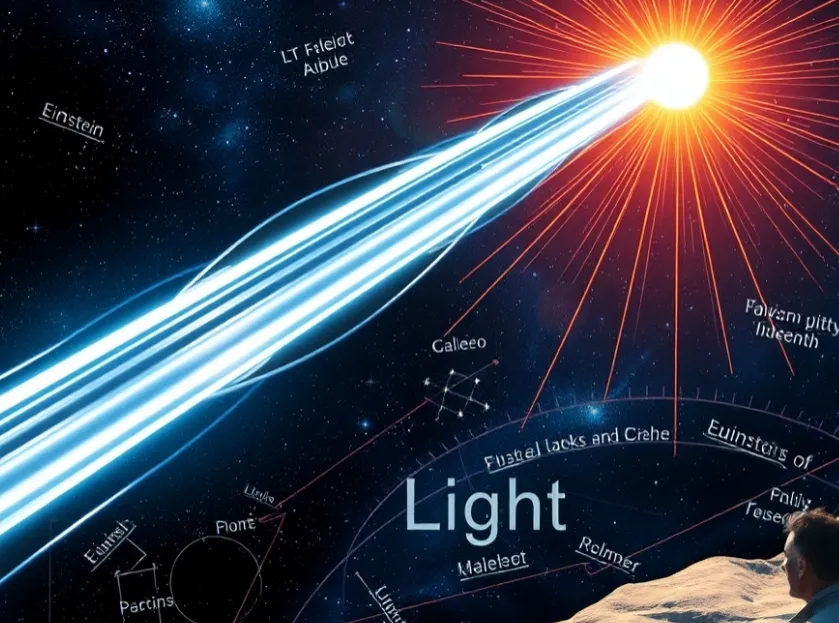Table of Contents
Introduction
A lunar eclipse is considered one of the most intriguing astronomical phenomena, combining natural beauty with scientific mystery. Not only does it represent a stunning visual event, but it also carries valuable lessons about the movement of celestial bodies and their interactions. In this article, we will explore the concept of a lunar eclipse, its types, mechanisms, and its cultural and scientific impacts.
Definition of a Lunar Eclipse
A lunar eclipse is an astronomical phenomenon that occurs when the moon moves in its orbit around the Earth and enters the Earth’s shadow, resulting in the blockage of sunlight reflected off the moon. This event happens when the sun, Earth, and moon align almost perfectly, allowing for different types of eclipses to occur.

Types of Lunar Eclipses
- Total Eclipse: In this case, the entire moon enters the Earth’s shadow, causing it to change color to red, commonly referred to as a “Blood Moon.” This type of eclipse typically lasts several hours and is considered one of the most beautiful and impactful astronomical events.
- Partial Eclipse: This occurs when part of the moon enters the Earth’s shadow while the other part remains illuminated. This type of eclipse allows for a visual gradient between shadow and light, showcasing the beauty of the phenomenon in a different light.
- Penumbral Eclipse: The least common type, a penumbral eclipse occurs when the moon enters the Earth’s penumbra, resulting in slight changes in brightness. In this case, the change is not significantly noticeable, making it difficult to detect without astronomical equipment.
How Does an Eclipse Occur?
For a lunar eclipse to take place, the sun, Earth, and moon must be in a specific alignment. The angle at which the moon’s rotation axis is tilted concerning its orbit around the Earth is the main reason why eclipses do not occur frequently. The moon’s rotation axis is tilted at about 5 degrees, which means that eclipses only happen when these celestial bodies align.
Phases of the Eclipse
The lunar eclipse goes through several stages:
- Beginning of the Eclipse: This stage starts when the moon begins to enter the Earth’s shadow, gradually reducing its brightness.
- Totality Phase: During this phase, the moon turns red, marking the moment when the “Blood Moon” can be observed.
- End of the Eclipse: As the moon exits the Earth’s shadow, its brightness gradually returns to normal.
Visual Aspects of the Eclipse
The colors that the moon exhibits during a total lunar eclipse are among the most exciting aspects. The moon transforms into various shades of red, from warm orange to deep red-brown. This color change is attributed to the phenomenon of “light scattering,” where sunlight passes through the Earth’s atmosphere, leading to the absorption and scattering of shorter light wavelengths while allowing the longer red wavelengths to reach the moon.
Impact of the Atmosphere
The Earth’s atmosphere plays a crucial role in determining how the moon appears during the eclipse. Levels of pollution and weather conditions vary by region, meaning that the eclipse’s visual experience can differ significantly from one location to another.
Cultural and Historical Dimensions
Throughout history, the phenomenon of lunar eclipses has been associated with numerous myths and folk beliefs. In some cultures, an eclipse was viewed as a sign of significant changes or impending crises. Some ancient peoples believed that eclipses were the result of battles between gods or even signs of their anger.
Eclipses in Ancient Astronomy
Ancient astronomers used lunar eclipses as a method to track time and understand the movements of celestial bodies. This phenomenon was seen as an accurate timekeeping tool for calendars, aiding in agricultural cycles and daily life organization.
How to Observe the Eclipse
To effectively observe a lunar eclipse, it is recommended to use binoculars or telescopes. Those wishing to document these unique moments can use cameras with long exposure settings to achieve the best results.
Tips for Observation
- Choose the Right Location: It is advisable to move away from bright city lights and seek dark areas where the sky can be seen clearly.
- Use Appropriate Equipment: Using a telescope or binoculars is recommended for seeing detailed features on the moon’s surface.
- Prepare in Advance: Check the timing and location of the eclipse to ensure you don’t miss the moment.
A lunar eclipse is more than just an astronomical phenomenon; it is an invitation to reflect and ponder the universe we inhabit. Understanding this phenomenon deepens our appreciation for the beauty and complexity of the solar system and encourages the exploration of more cosmic mysteries. As we live in an age of technology, we should not forget the importance of these natural phenomena that remind us of our place in the universe.
References
References
- NASA – Lunar Eclipses: [NASA Website]
- National Geographic – Blood Moon: A Guide to Lunar Eclipses: [National Geographic]
- The Royal Astronomical Society – Understanding Eclipses: [RAS]
- Cosmos: A Spacetime Odyssey – Episode 1: Standing Up in the Milky Way.
- The Astronomy Encyclopedia: [Astronomy Encyclopedia]


